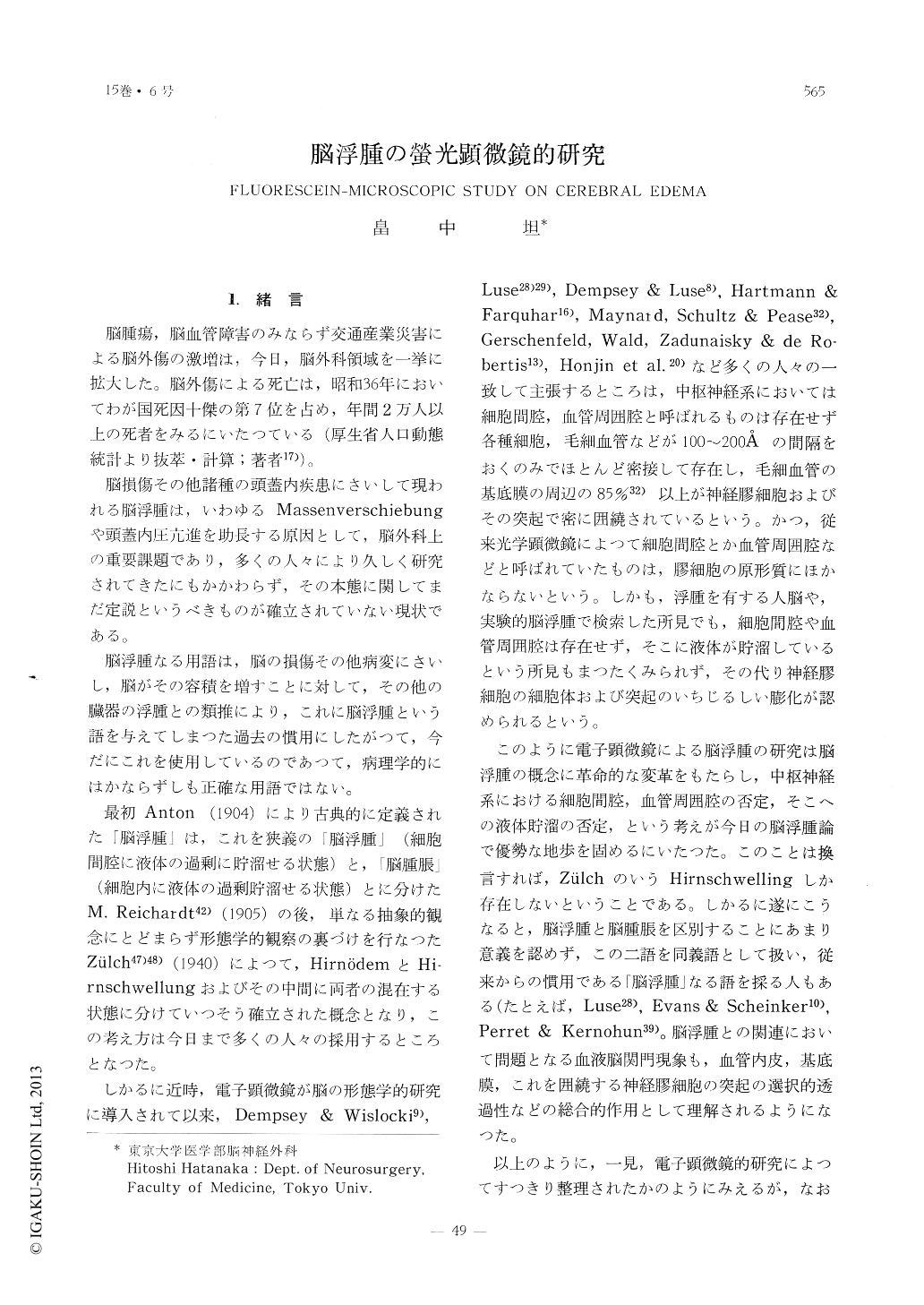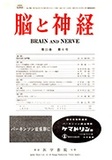Japanese
English
- 有料閲覧
- Abstract 文献概要
- 1ページ目 Look Inside
I.緒言
脳腫瘍,脳血管障害のみならず交通産業災害による脳外傷の激増は,今日,脳外科領域を一挙に拡大した。脳外傷による死亡は,昭和36年においてわが国死因十傑の第7位を占め,年間2万人以上の死者をみるにいたつている(厚生省人口動態統計より抜萃・計算;著者17))。
脳損傷その他諸種の頭蓋内疾患にさいして現われる脳浮腫は,いわゆるMassenverschiebungや頭蓋内圧亢進を助長する原因として,脳外科上の重要課題であり,多くの人々により久しく研究されてきたにもかかわらず,その本態に関してまだ定説というべきものが確立されていない現状である。
It has been shown electron-microscopically that there exists no extracellular nor perivas-cular space in the central nervous system, even in an edematous tissue. The Blood-Brain-Barrier Phenomenon is being interpreted as a composite function of vascular endothel, glial processes surrounding the vessels, ab-sence of perivascular space, and homeostatic activity of glial cells and so on. However, there remain several difficulties. For instance there is the problem of extracellular space of approximately 4~5% measured by inulin, sugar or radioactive sulfate. And the second is the controversy concerning the identifica-tion of the swollen neuroglial cells in the edematous tissue as seen by electron micro-scopy. Luse et al. advocate oligodendroglia, while the others including Hartmann, De Robertis, Honjin and so forth advocate astroglia.
The author's present work has aimed at solution of these questions resorting to fluo-rescence microscopy apart from electron microscopy.
Mercury lamp, filters, microscope and other equipments were all Japanese products. The author did not use the conventional technique of Freeze-Dry-Paraffin-Imbedding method, because the slices had to be restained by Cajal' s and Tsujiyama's silver staining techniques, in order to identify the cells with fluores-cence. Experimental cerebral edema was produced by injecting salad-oil into the left carotid artery of adult cats, who were sacri-fice by injecting 10% formalin into the left ventricle under the pressure of 150mm H2O. By applying Elvanol (a mixture of polyvinyl alcohol, glycerine and buffer solution), the frozen section of the tissue was observed fluorescence-microscopically and taken photo-graphs using high-speed films, order to memo-rize the cells emitting fluorescence. After silver-staining, the slices were re-studied to identify the memorized cells.
It was revealed that both astro. and oligo. contained the dye suggesting that the two, but not either one of them singly, partain to the cerebral swelling.
Another interresting observation was that some certain oligo. containing the dye adjoined to a nerve cell without the dye, whereas another oligo. adjoinig to a nerve cell contain-ing the dye did not have the dye in itself. The author assumes an interaction between the nerve cells and the satellite oligodendroglial cells. The author even postulates a pump-like action of the oligo., taking into account of the undulating rhythmic movements of the cultured oligo.
The fact that other cellular components of the tissue including nerve cells, myelin sheaths, endothelial cells and pericytes con-tained the dye suggests the possible partaking in the cerebral edema of these cells as well as the above mentioned glial cells. The author also imagines that the electron density of the swollen glial cells might decrease whether it be astro. or oligo.
The question as to what type of edema takes place in this experiment cannot be easily answered. However, judging from the fact that the cells disclosed their contours fairly well, this type of edema might belong to the so-called Intracellular type, or Cerebral Swelling (Zülch).

Copyright © 1963, Igaku-Shoin Ltd. All rights reserved.


